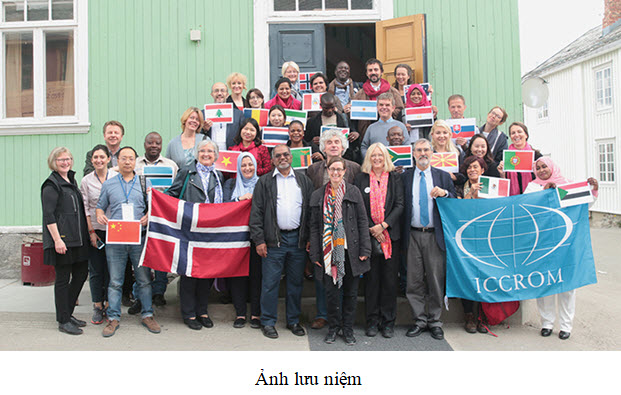This ground-breaking course is a key component of the new World Heritage Leadership programme developed by ICCROM, IUCN and the Norwegian Ministry of Climate and Environment. It is implemented in collaboration with ICOMOS and UNESCO World Heritage Centre, with additional financial contributions from the Swiss Federal Office of Culture.
Member States represented: Australia, Argentina, Botswana, China, Egypt, Georgia, India, Japan, Kenya, Lebanon, Mexico, Namibia, Norway, Peru, Portugal, Romania, Slovakia, Republic of Korea, South Africa, Sudan, Switzerland, Thailand, TFYR Macedonia, United Kingdom, United States, Viet Nam, Zambia.
Over 20 participants from nature and culture sectors representing over 20 countries shared their experiences and worked with international resource persons through four different modules covering the topics from the evolution of conservation concepts to the techniques and tools used in management of heritage sites.

Mrs. Pham Thi Bich Van – M.A. in Culture, researcher from Vietnam Institute for Urban and Rural Planning - Representative of Vietnam attended this course.
M.A. Pham Thi Bich Van made a speech on the issue: Preservation of heritage in construction planning. On that basis, there are conservation planning solutions to promote its heritage values. She has concentrated on following contents:
- Types of conservation: nature, culture (emphasis on indigenous cultural values)
- Reassess the value of the heritage and the impact of the environment on the heritage management.
- Classify of Conservation levels: Absolute Preservation Area; The embellishment area; Investment zone; Buffer zone.
- Propose heritage management planning solutions.
The World Heritage Leadership Programme (WHLP) is to enhance natural and cultural linkages - the role of people in heritage management. Ensure that heritage plays a more active role in sustainable development.